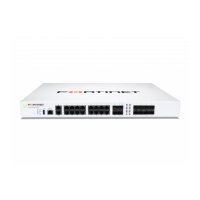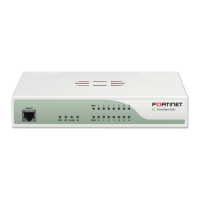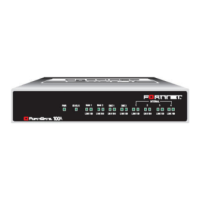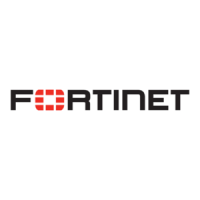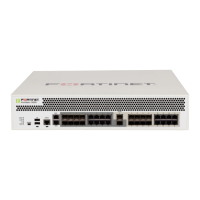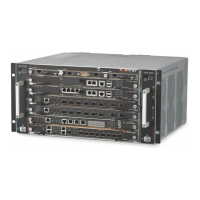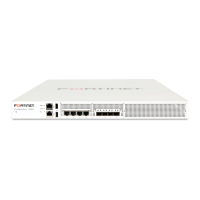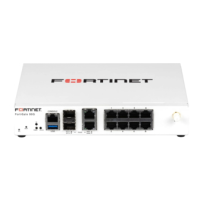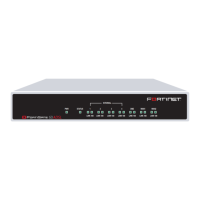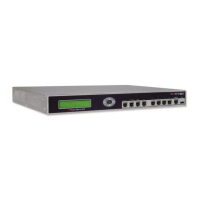Testing the installation
FortiMail™ Secure Messaging Platform Version 4.0 Patch 1 Install Guide
160 Revision 2
http://docs.fortinet.com/ • Feedback
Figure 55: Connection test paths (server mode)
To verify all SMTP connections to and from your FortiMail unit, consider both internal and
external recipient email addresses, as well as all possible internal and external SMTP
clients and servers that will interact with your FortiMail unit, and send email messages that
test the connections both to and from each of those clients and servers. For example:
1 Using an SMTP client on the local network whose MTA is the FortiMail unit or
protected email server, send an email from an internal sender to an internal recipient.
2 Using an SMTP client on the local network whose MTA is the FortiMail unit or
protected email server, send an email from an internal sender to an external recipient.
3 Send an email from an external sender to an internal recipient.
4 If you have remote SMTP clients such as mobile users or branch office SMTP servers,
using an SMTP client on the remote network whose MTA is the FortiMail unit or
protected email server, send an email from an internal sender to an internal recipient.
5 If you have remote SMTP clients such as mobile users or branch office SMTP servers,
using an SMTP client on the remote network whose MTA is the FortiMail unit or
protected email server, send an email from an internal sender to an external recipient.
If you cannot connect, receive error messages while establishing the connection, or the
recipient does not receive the email message, verify your configuration, especially:
• routing and policy configuration of intermediary NAT devices such as firewalls or
routers
• connectivity of the FortiMail unit with the Fortinet Distribution Network (FDN)
• external email servers’ connectivity with and the configuration of the public DNS server
that hosts the MX records, A records, and reverse DNS records for your domain names
• the FortiMail unit’s connectivity with and the configuration of the local private DNS
server (if any) that caches records for external domain names and, if the “Use MX
Record” option is enabled, hosts private MX records that refer to your protected email
servers
• access control rules on your FortiMail unit
• configuration of MUAs, including the IP address/domain name of the SMTP and
POP3/IMAP server, authentication, and encryption (such as SSL or TLS)
For information on tools that you can use to troubleshoot, see “Troubleshooting tools” on
page 161.
External
Em ail Server
Local Em ail Users
Public DNS Server
Internet
Sw itch
Rem ote Em ail Users
SM TP
con n ection
te st paths
Webmail &
PO P3/IMAP
con n ection
te st paths
Private
DNS Server
Server Mode
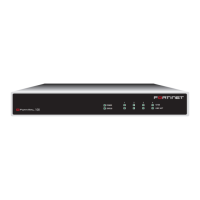
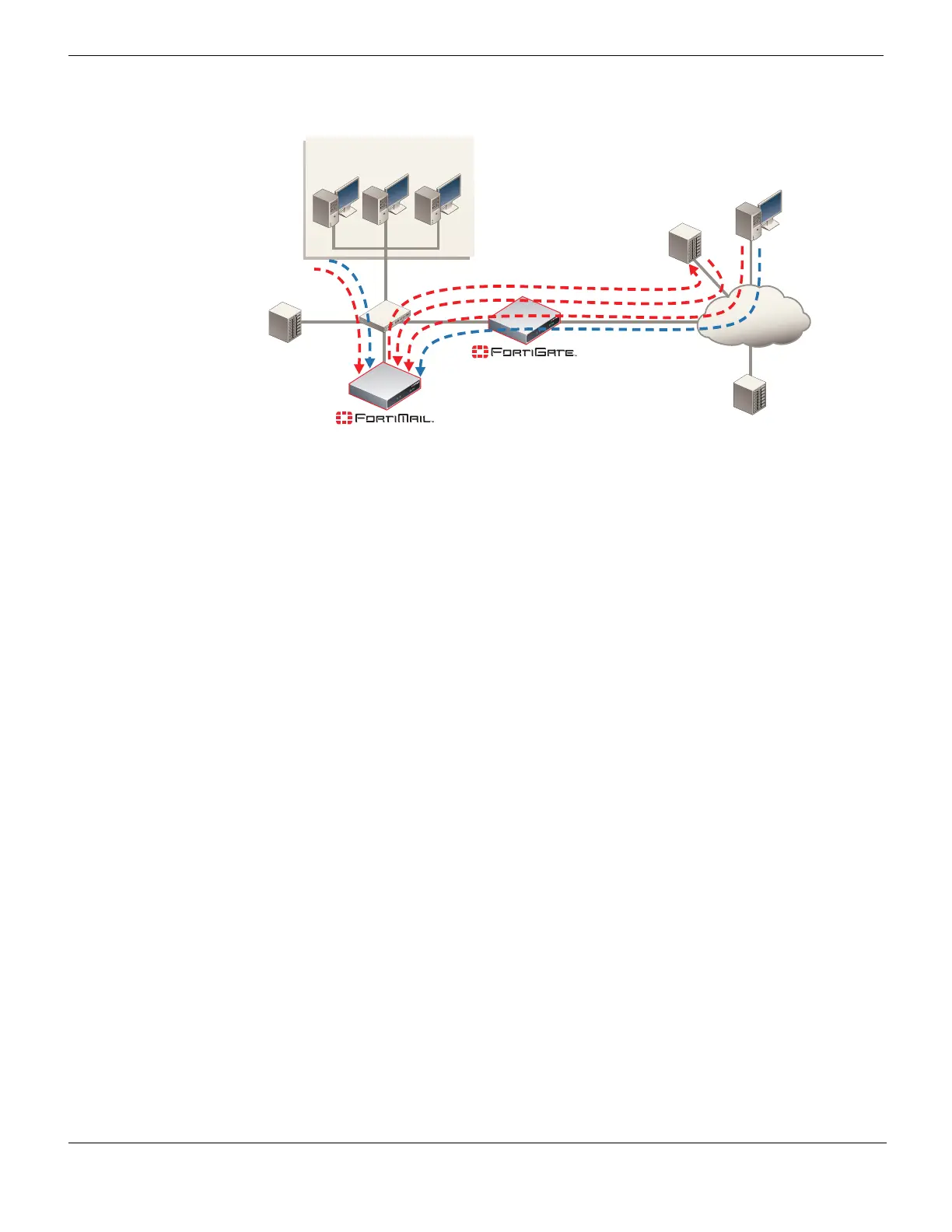